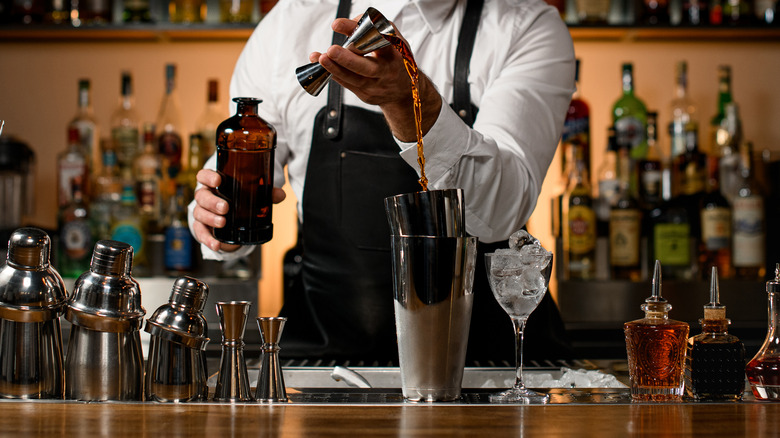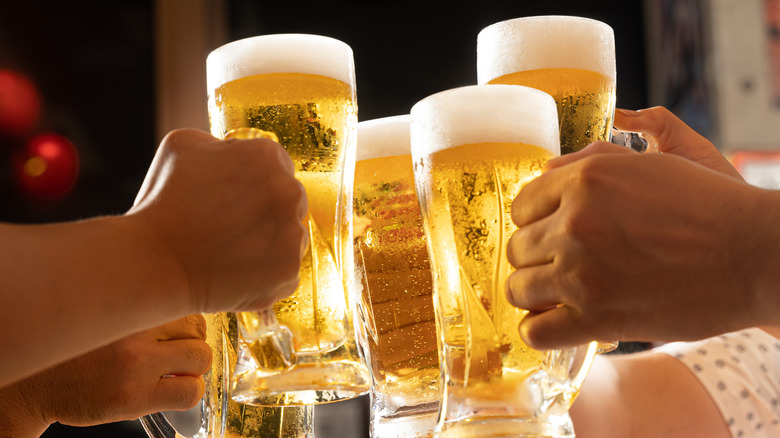The Concept Of Bars Dates All The Way Back To Ancient Times
Grabbing a beer, a glass of wine, or a cocktail is a pastime that is tightly embedded into cultures around the world. Whether to celebrate, grieve, or simply catch up or unwind after a long day, there are infinite reasons for folks to rally at the local watering hole. The concept of bars as a whole seems a little bizarre when you really take a moment to think about it: several groups of strangers from various walks of life congregated in a single place indulging in alcohol. As it turns out, the premise has been around for quite a long time — millennia, in fact.
Some historians have traced public drinking spots back to ancient civilizations such as the Greeks and Romans, though the bars of those times were more like taverns and were often associated with debauchery, gambling, and excess. During the Middle Ages, visiting pubs and alehouses remained popular in Europe, especially in England. These central gathering places, known as inns, were where people could casually drink and socialize. They were often owned by local breweries or private citizens and were sometimes used to conduct business negotiations. In a lot of ways since then — not much has changed.
Bars are still a pinnacle of drinking culture
In the 16th Century, bars began to take on a more sophisticated and refined atmosphere, as coffeehouses and breweries served as common meeting spots for artists, writers, and intellectuals. In the United States, bars were a fixture of colonial life and can be traced back to the 19th Century, when saloons were a locale for cowboys, miners, and other laborers during the California Gold Rush. These early bars often served as more than just a place to drink and were sometimes also used as hotels or brothels.
As the 20th Century progressed, bars became more diverse, adopting various themes and influences. Then, during Prohibition in the 1920s and early 1930s, the sale and consumption of alcohol – with the exception of whiskey – was illegal in the U.S. This led to the rise of speakeasies and secret bars that served outlawed booze to patrons.
After Prohibition was repealed in 1933, bars became more mainstream and began to take on a variety of themes, from high-end cocktail lounges to dive bars. In the '50s, '60s, and '70s, bars became associated with the counterculture movement, with many hostelries catering to young people looking for a place to socialize and freely listen to music. Today, of course, bars are ubiquitous, found in nearly every city and town around the world. Cheers!

